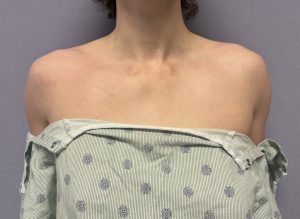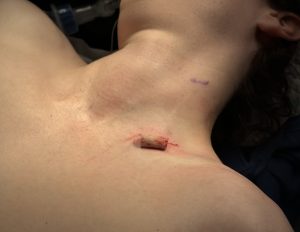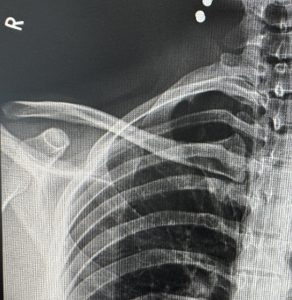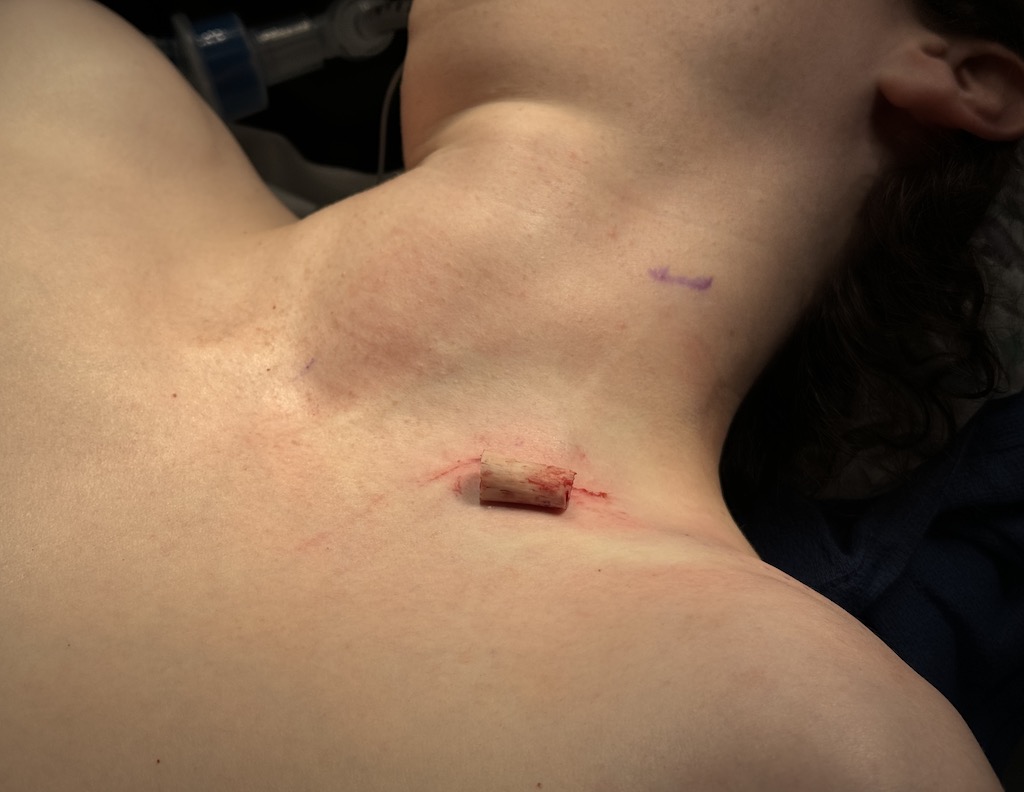Background: Shoulder narrowing surgery by clavicle reduction osteotomies is an effective treatment for shoulder dysphoria but poses a unique recovery process. Unlike a clavicle fracture in which only one side is injured in shoulder narrowing surgery both sides are affected. This poses significant early after surgery arm restriction movements for the first few weeks after the surgery. While not an insurmountable recovery issue there are logistical issues that mandate some scheduled assistance in the early recovery process.
Because of the upper arm restrictions early after shoulder narrowing there are two approaches to managing the recovery process….do both arms at once or do one shoulder at a time. There are arguments and reasons to do the surgery with either approach. Bilateral surgery is the most efficient as it is one surgery but also poses the most challenging recovery. A stage approach makes the recovery easier as the patient has one good arm but it requires two surgeries.
While usually the choice of the shoulder narrowing approach is up to the patient, there are indications when the two stage approach is absolutely indicated. One indication for the two stage approach is if one is undergoing the surgery solo (with no accompanying support) and may also be undertaking other body procedures as well. I would not say this is an absolute indication but one that bears strong consideration. The one absolute indication for a two stage approach is when the clavicle bone is very thin and only one plate fixation can be applied. Having both arms with single plate fixation increases the risk of fixation failure and/or non-union. While a good reason for staging the surgery the problem is identifying who has such a clavicle with a narrow cross-sectional diameter.




Key Points:
1) Shoulder narrowing surgery can be done in two stages which offers an enhanced recovery process.
2) Two stage shoulder narrowing patients typically start with the non-dominant hand shoulder.
3) In a very thin clavicle a single superior plate fixation may be all that can be applied.
Dr. Barry Eppley
World-Renowned Plastic Surgeon




